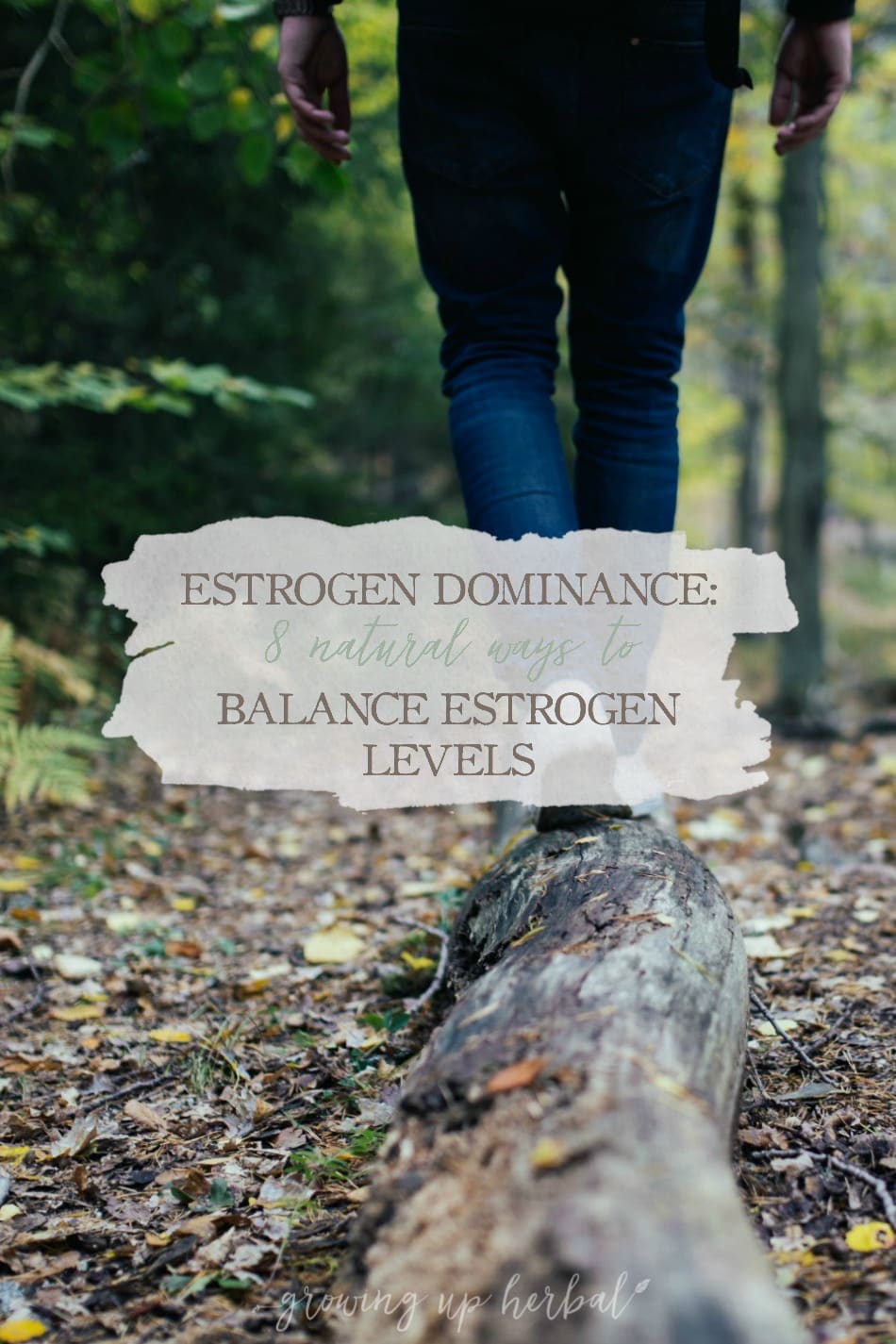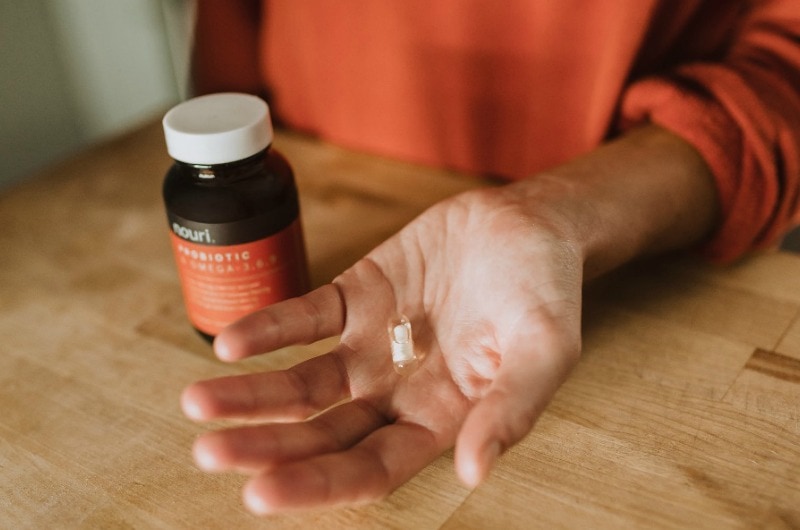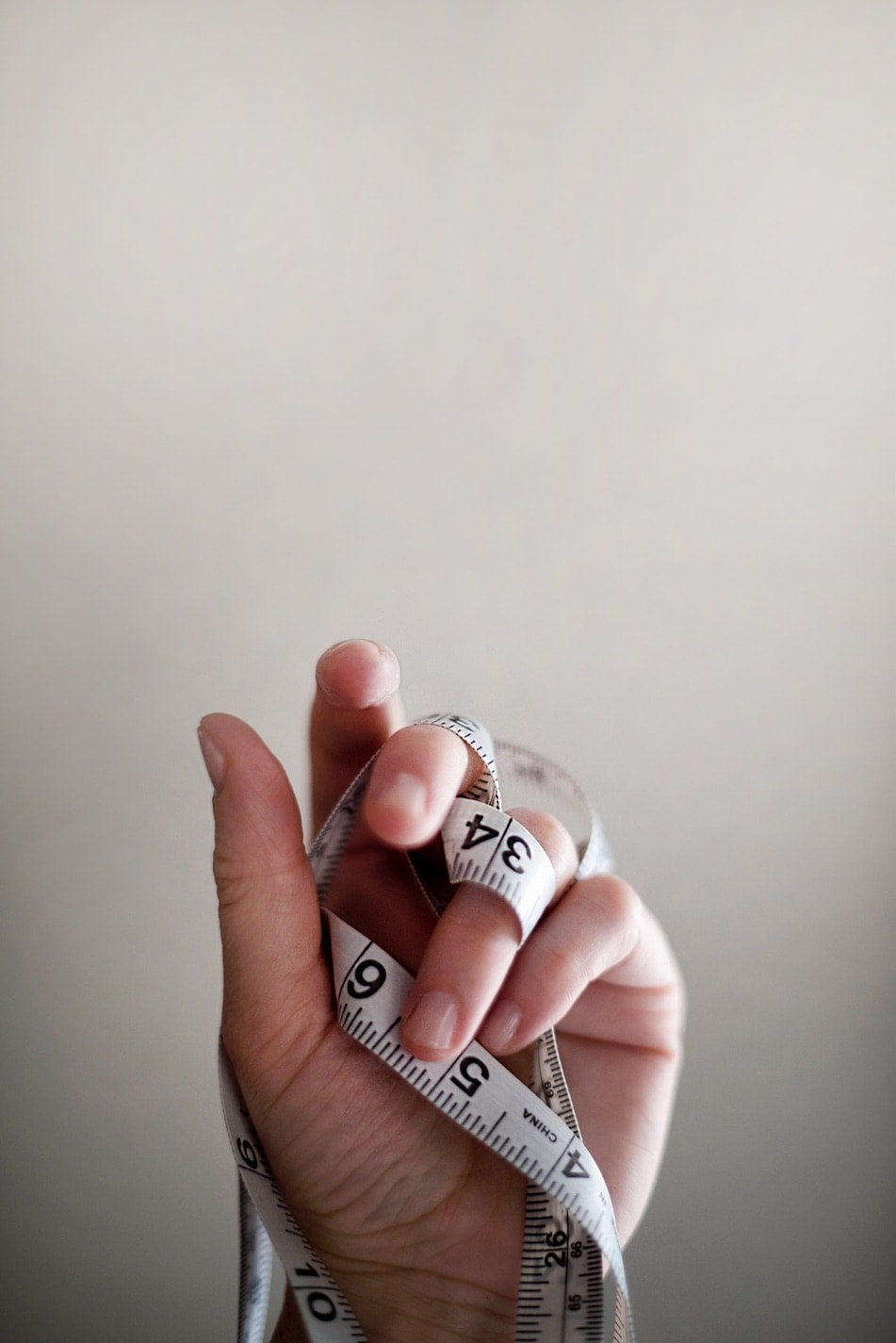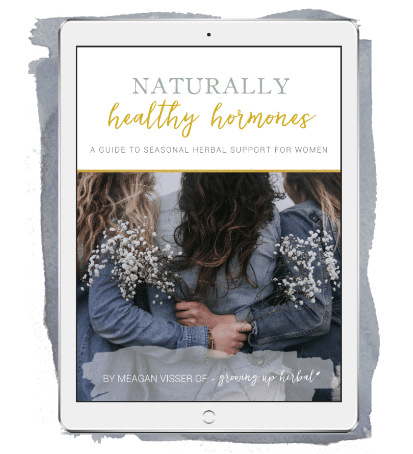
While I’ve been blessed with good health for my entire life (other than the occasional viral or bacterial infection that is), over the last couple of years, I’ve noticed little symptoms popping up here and there that alert me that something in my body isn’t quite right. The symptoms aren’t anything major, but they are there to get my attention, so I’ll deal with them before they become something significant.
The symptoms I’m referring to are signs of estrogen dominance, which are basically little glimpses of age that are creeping up on me.
Last year, I wrote a blog post sharing my plans for liver cleansing during spring to help support my body process extra estrogen, and while that is all well and good and many of the symptoms I was experiencing lessened, they didn’t completely go away. Ultimately, I realized that there are other things I need to be doing beyond liver cleansing to help bring my body into a better state of balance.
Today, I would like to share what I’ve learned about estrogen dominance and some natural ways to correct this imbalance with you. While the majority of this information is regarding hormone function and balance in a woman’s body, it can also apply to the hormones in a man’s body as men also produce estrogen, and men can also experience estrogen dominance.
With that said, if you are in your mid-thirties, male or female, or experiencing any symptoms of estrogen dominance, perhaps this information will be helpful to you!

Understanding Estrogen Dominance
A person is said to have estrogen dominance when the body has too much estrogen relative to progesterone (in women) or testosterone (in men).
Estrogen, progesterone, and testosterone are all hormones the body produces and uses for a variety of purposes, fertility being one of them. While you can learn more about the role these hormones play in the body by browsing the results of a Google search, I also go into more detail about them, specifically regarding how hormones fluctuate throughout the various seasons of a woman’s life and how we can support hormone balance naturally, in my ebook, Naturally Healthy Hormones.
As we age, hormone production begins to shift as our bodies prepare for menopause (in women) or andropause (in men). It is believed that symptoms of estrogen dominance can show up anywhere from 10-15 years before menopause or andropause, usually around the age of 35.

Symptoms of Estrogen Dominance
Symptoms of estrogen dominance vary for men and women, and a person who has estrogen dominance may not experience all of these symptoms.
Estrogen dominance symptoms include:
- Low libido
- Irregular periods
- Swollen or tender breasts
- Fibrocystic breast
- Bloating
- Headaches
- Mood swings
- Fatigue
- Depression
- Anxiety
- Weight gain
- Brain fog
- Insomnia
- PMS
- Thyroid nodules
- Fibroids
- Endometriosis
- Polycystic ovarian syndrome
- Cancer – breast, uterine, prostate
As you can see, these symptoms are not exactly pleasant. In addition to that, excess estrogen in the body is said to exacerbate the aging process—something most of us do NOT want! If left unchecked, estrogen dominance can lead to fatigue and irritability, as well as autoimmune conditions, thyroid dysfunction, and even certain kinds of cancer (Patel et al., 2018).
Like I said earlier, symptoms of estrogen dominance are your body’s way of telling you it’s out of balance. It’s important that we pay attention to these symptoms before this imbalance leads to more serious health conditions like those mentioned above.
Potential Causes of Estrogen Dominance
Estrogen dominance is on the rise from years past, and this is believed to be due to a few different reasons. The first reason is that estrogen dominance may be more recognized and diagnosed than it used to be. Next, it could also be that we’re exposed to more xenoestrogens (external estrogens found in food, personal care products, furniture, clothes, and more) than people used to be. Another reason for estrogen imbalance is unmanaged stress that affects not only estrogen but many other hormones as well (Myers, 2019).
No matter the reasons, the body is designed to deal with and manage excess estrogens circulating in our bloodstream via metabolization.
Estrogen Metabolization
One of the many jobs of the liver is to metabolize hormones, converting them into either metabolites the body can further use or waste products the body will rid itself of.
When it comes to estrogen, metabolization happens through three pathways or cycles in the liver (Tilgner, 2018). The better you care for your liver, the more effectively it can metabolize your hormones. If you have a liver deficiency of some kind, it can keep one or more of the three phases of liver metabolism from working properly, and you may experience excess estrogen in the body as a result. There are a variety of health, lifestyle, and environmental factors that determine which metabolic pathways are used. Some gene mutations such as the catechol-O- methyltransferase gene (COMT) and the methylenetetrahydrofolate reductase gene (MTHFR) can also inhibit the body’s ability to metabolize your hormones.
Below I want to share 8 ways you can work towards naturally balancing your estrogen if you think you may have estrogen dominance. Each of the following methods are holistic, healthy practices that are good for anyone to incorporate into their life, not just those with excess estrogen!
8 Natural Ways To Balance Estrogen Levels
No matter your age, gender, or current health status, many of the following holistic practices are beneficial to one’s wellness. However, if you think you may have estrogen dominance or if your lab results clearly show elevated estrogen levels, implementing these practices can help support the body in managing that excess.

1. Increase Nutrients in the Diet
A nutrient-rich diet is so important to general health, but this is an area that many of us tend to overlook when we’re feeling well. However, if symptoms of estrogen dominance show up, take time to look at your diet and assess areas you could clean up. For example, eat a healthy diet with plenty of fresh fruits and vegetables, adequate protein, and a good balance of healthy fats and carbs. The Mediterranean diet is a great diet that is considered to be one of the healthiest ways of eating in the world! Don’t forget to get plenty of fiber, so waste products are excreted from the body, not reabsorbed! If there are factors keeping you from eating a well-balanced diet, take a high potency multivitamin/mineral combination as a supplement. Don’t forget to drink from clean water sources. We use RO water and add trace minerals into our water throughout the day. And for crying out loud—ditch the plastic!!
2. Clean Up Your Body Care Products!
Body care products often contain parabens, phenoxyethanol, phthalates, and other compounds that all have estrogenic activity (Golden, Gandy, and Vollmer, 2005). Instead, opt for natural products with simple ingredients that you can read. If you have to use something less than ideal, try to keep it to a minimum and keep searching for an alternative. I can’t tell you how long it took me to find a natural alternative to deodorant, but praise the Lord, I finally found one!

3. Keep Your Gut Healthy
Having healthy gut flora has many beneficial effects on the body, both physical and mental. One specific physical benefit is healthy hormone level support.
While metabolizing hormones is one of the liver’s main jobs, beneficial bacteria in the gut can also help to reduce circulating estrogen in the body. In a 2016 review, researchers found that the intestinal microbiome contains an aggregate of enteric bacterial genes, called an ‘estrobolome,’ that are capable of metabolizing estrogens (Kwa et al., 2016). Further study is needed to learn more about the composition and activity of these estrobolomes in healthy persons and in persons with estrogen dominance.
Eating a balanced diet with the addition of cultured and fermented foods can be a great start to maintaining or repairing the gut’s microbiome. Adding in a daily probiotic is another way to increase beneficial bacteria in the gut. You can find a list of some of my favorite probiotic brands for children and adults here. Avoiding antibiotics unless necessary, is another huge step in the right direction as antibiotics have the ability to destroy all bacteria, beneficial and harmful.
4. Avoid Heavy Metals Where Possible
We can be exposed to metals in several ways, such as in our environment, via the foods we eat and the water we drink, through the products we use around our home and on our skin, and yes, even in things that are supposed to keep us healthy, such as vaccines and dental fillings. Many of these metals are necessary for proper body function and health, but some of them, particularly in excess, can cause negative health effects.
While the body can use and rid many metals from the body, those not removed are often termed “heavy metals.” They are stored in the body, usually fat tissue, and can accumulate over the years, leading to many adverse effects on one’s health.
One negative health effect associated with heavy metals is hormone disruption. Some metals can bind to hormone receptor sites, stimulating hormone-like effects throughout the body (Dyer, 2007). Metals that bind to estrogen receptor sites are called ‘metalloestrogens.’
The cleaner you can eat, and the more you can incorporate non-toxic products into your life, the less heavy metal exposure you will have. If you think you might have high levels of metals in your body, heavy metal testing can be sought out. Just ask your doctor or do a Google search and look for a reputable source that offers these types of tests. Detoxing and cleansing, as well as so other types of therapies, can assist in helping to remove heavy metals from the body as well.

5. Lose Excess Body Fat & Get Regular Exercise
Excess body fat, particularly the fat stored in the hips, waist, and thighs that are common among women and fat stored in the abdomen that is common in men, is one cause of estrogen production that could contribute to estrogen dominance (Cleary & Grossmann, 2009).
While it’s not entirely clear just how fat relates to excess estrogen, it is believed that fat tissue may absorb and store estrogen, and perhaps, also synthesizes estrogen from your other hormones (Science Daily, 2013). Studies have shown that when overweight women lose excess fat, their estrogen levels decrease (BreastCancer.org, n.d.).
Maintaining a healthy weight and incorporating regular exercise, especially strength training, can help support estrogen level balance. Not only does exercise benefit estrogen balance, but regular exercise also has other positive health benefits, both physically and mentally. Sweating also helps the body detox, so it’s a good idea to heat up those exercise programs or use a sauna regularly.
6. Support Your Liver
The liver acts as a filter, helping us screen out everything we put on and in our bodies, converting useless substances into useful ones, and eliminating waste products the body doesn’t need. This is just one of its many jobs, so we need to do our part to support the health and function of our liver.
Overloading the body with alcohol, drugs, caffeine, or other environmental toxins puts a burden on the liver. Too much of a burden can cause decreased liver function, often in the way the liver metabolizes substances, thus, slowing down how effectively and how quickly the body rids itself of these toxins and their metabolites. This liver stagnation, as we herbalists like to call it, can result in a decreased capacity for the liver to cleanse the blood of excess estrogen.
Hepatoprotective herbs such as astragalus (Astragalus membranaceous), licorice (Glycyrrhiza glabra), milk thistle (Silybum marianum), and others can help protect the liver tissue from damage from toxins or the damage that can occur when phase two metabolism is slowed down (Tilgner, 2018). These types of herbs not only protect liver tissue from damage, but they support the regeneration of liver cells, help to normalize liver enzymes, and decrease liver inflammation as well (Tilgner, 2018).

7. Decrease Stress
When the body is under any type of stress, acute or chronic, cortisol is released to help the body deal with stress. Cortisol is created from the same hormone as progesterone, so when the body needs to make more cortisol to deal with stress, progesterone production is sacrificed, therefore, creating an imbalance between estrogen and progesterone.
To deal with excess or chronic stress in life, we need to learn how to manage stress through healthy dietary and lifestyle practices. Exercise, deep breathing, aromatherapy, and spending time in nature can all help to lower stress levels. Herbs can even be called upon to help support the body in stress management.
8. Choose Healthier Hormone Replacement Options
If you think your estrogen dominance symptoms are due to normal hormone fluctuations, which are the result of the natural aging process, it can be a good idea to get your hormone levels tested. If your estrogen levels are in a healthy range, but your progesterone levels are low, you can opt for natural, bioidentical hormones to help regulate your hormones.
Bioidentical hormones are hormones extracted from plants. They are a safer option than synthetic hormones and birth control, which tend to be toxic and are not easily metabolized by the liver, as they are recognized and metabolized by the body similarly to our own hormones (Holtorf, 2009).
Herbs can also offer some help when it comes to hormone balance. One such herb is maca, an adaptogenic root vegetable from South America that has a hormone-modulating activity for both men and women (Gonzolez, 2012).

Naturally Healthy Hormones In Every Stage of Life
With a little know-how and will power, everyone can do their part to keep their hormones balanced and cycling as they should. However, when our hormones become imbalanced, there are still things we can do to encourage the body to move back towards a balanced state of health.
When it comes to estrogen dominance, we’ve just discussed 8 natural ways to support estrogen balance, but many other hormones are circulating through the body. How can we be proactive and do our part to keep these hormones functioning at normal levels, especially as we go through different seasons of life?

We’ll share some lifestyle practices (from diet and exercise to meditation, herbs, and more) that can help to gently ease your body into a more balanced, healthy hormonal state. You will also find 30+ herbal recipes scattered throughout the chapters of this book to make it easy for you to incorporate these herbal allies into your life as well. Lastly, we’ve included some fantastic hormone resources to help you if you’re looking for more information and support as you transition from season to season.
Naturally Healthy Hormones: A Guide To Seasonal Herbal Support For Women is a beautifully designed 70-page ebook that will teach you how herbs and lifestyle changes can help keep your hormones “balanced.” It will provide you with a basic overview of the endocrine system and offer five foundational steps that will set you up for naturally healthy hormones right from the beginning. You’ll also get an overview of the most common hormonal changes and symptoms experienced during pregnancy and learn about common postpartum hormonal changes and complaints. We’ll even discuss hormone changes experienced in menopause and how to manage them with grace. You’ll find a plethora of hormone resources for all stages in the hormone journey throughout this entire book, and you’ll even get 30+ herbal recipes and countless lifestyle recommendations that can help support your body during every step of the journey of womanhood!
Whether you want to set yourself up for hormone success from the get-go, sail through pregnancy and postpartum period with ease, or manage menopause with as much grace as possible, Naturally Healthy Hormones can help guide you in the right direction.
CLICK HERE to download your copy right away and start your journey to naturally healthy hormones!
REFERENCES:
BreastCancer.org. (n.d.). Hormone levels drop when obese women lose weight. Retrieved from https://www.breastcancer.org/research-news/20120530
Cleary, M.P., & Grossmann, M.E. (2009). Obesity and breast cancer: The estrogen connection. Endocrinology, 150(6): 2537–2542. https://doi.org/10.1210/en.2009-0070
Dyer, C.A. (2007). Heavy metals as endocrine-disrupting chemicals. In A.C. Gore (Eds.), Endocrine-disrupting chemicals: From basic research to clinical practice (pp. 111-133). Totowa, NJ: Humana Press Inc.
Golden, R., Gandy, J., & Vollmer, G. (2005). A review of the endocrine activity of parabens and implications for potential risks to human health. Critical Reviews in Toxicology, 35(5), 435-458. https://doi.org/10.1080/10408440490920104
Gonzolez, G.F. (2012). Ethnobiology and ethnopharmacology of Lepidium meyenii (maca), a plant from the Peruvian highlands. Evidence Based Complementary and Alternative Medicine, 2012, 193496. https://doi.org/10.1155/2012/193496
Holtorf, K. (2009). The bioidentical hormone debate: are bioidentical hormones (estradiol, estriol, and progesterone) safer or more efficacious than commonly used synthetic versions in hormone replacement therapy? Postgraduate Medicine, 121(1), 73-85. https://doi.org/10.3810/pgm.2009.01.1949
Kwa, M., Plottel, C.S., Blaser, M.J., & Adams, S. (2016). The intestinal microbiome and estrogen receptor-positive female breast cancer. The Journal of National Cancer Institute, 08(8). https://doi.org/10.1093/jnci/djw029
Meyers, A. (2019). The stress-hormone connection. Retrieved from https://www.amymyersmd.com/2019/10/the-stress-hormone-connection/
Patel, S., Homaei, A., Raju, A.B., & Meher, B.R. (2018). Estrogen: The necessary evil for human health, and ways to tame it. Biomedicine & Pharmacotherapy, 102, 403-411. https://doi.org/10.1016/j.biopha.2018.03.078
Science Daily. (2013). Estrogen’s effects on fat depends on where it’s located. Retrieved from https://www.sciencedaily.com/releases/2013/07/130726131218.htm
Tilgner, S.M. (2018). Herbal ABCs: The foundation of herbal medicine. Pleasant Hill, OR: Wise Acres LLC.